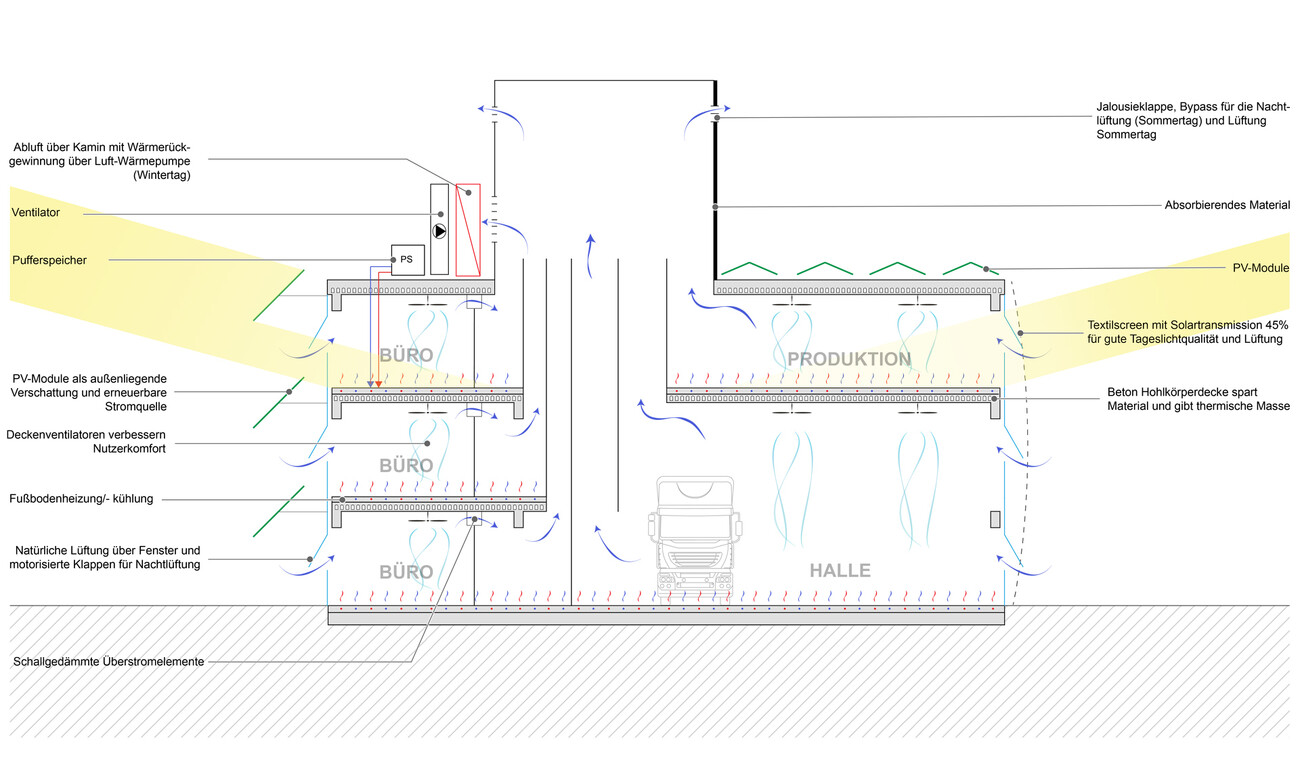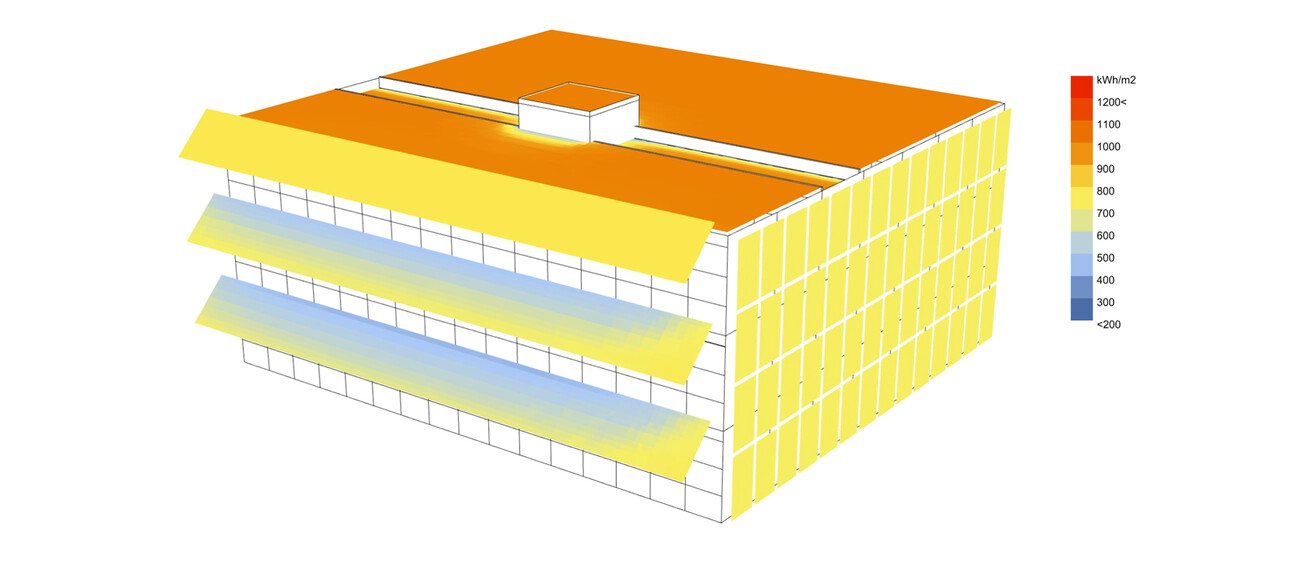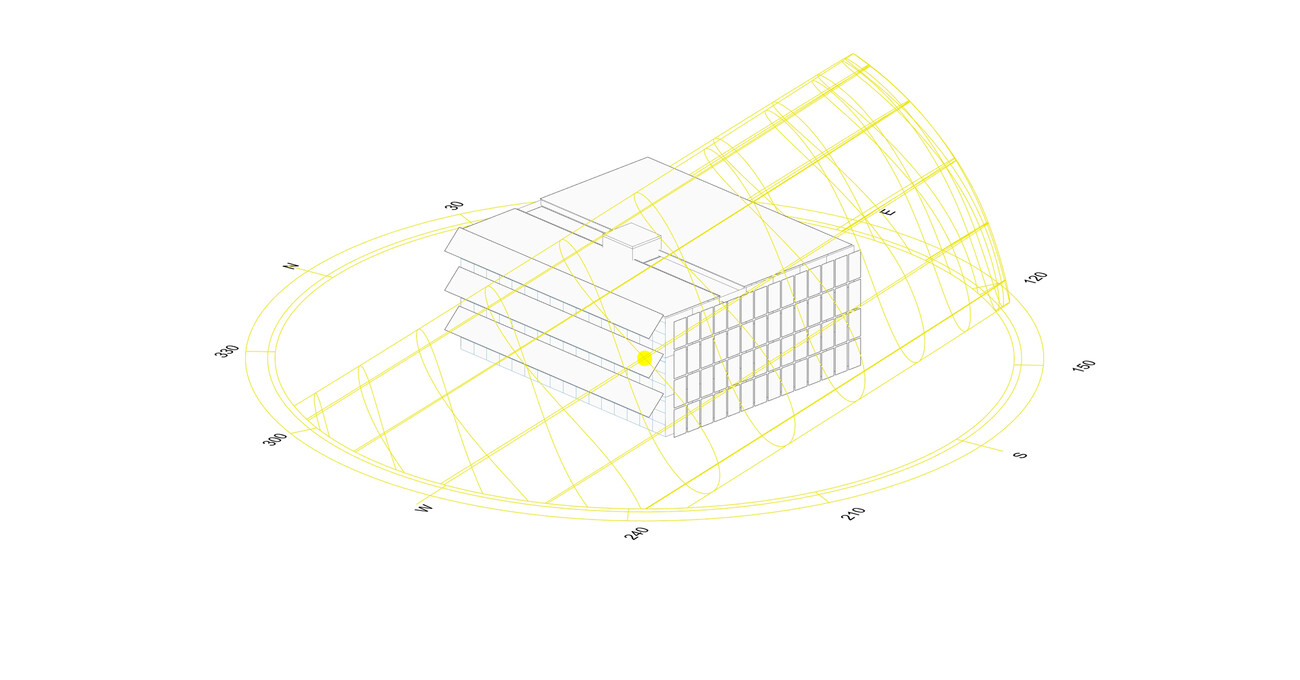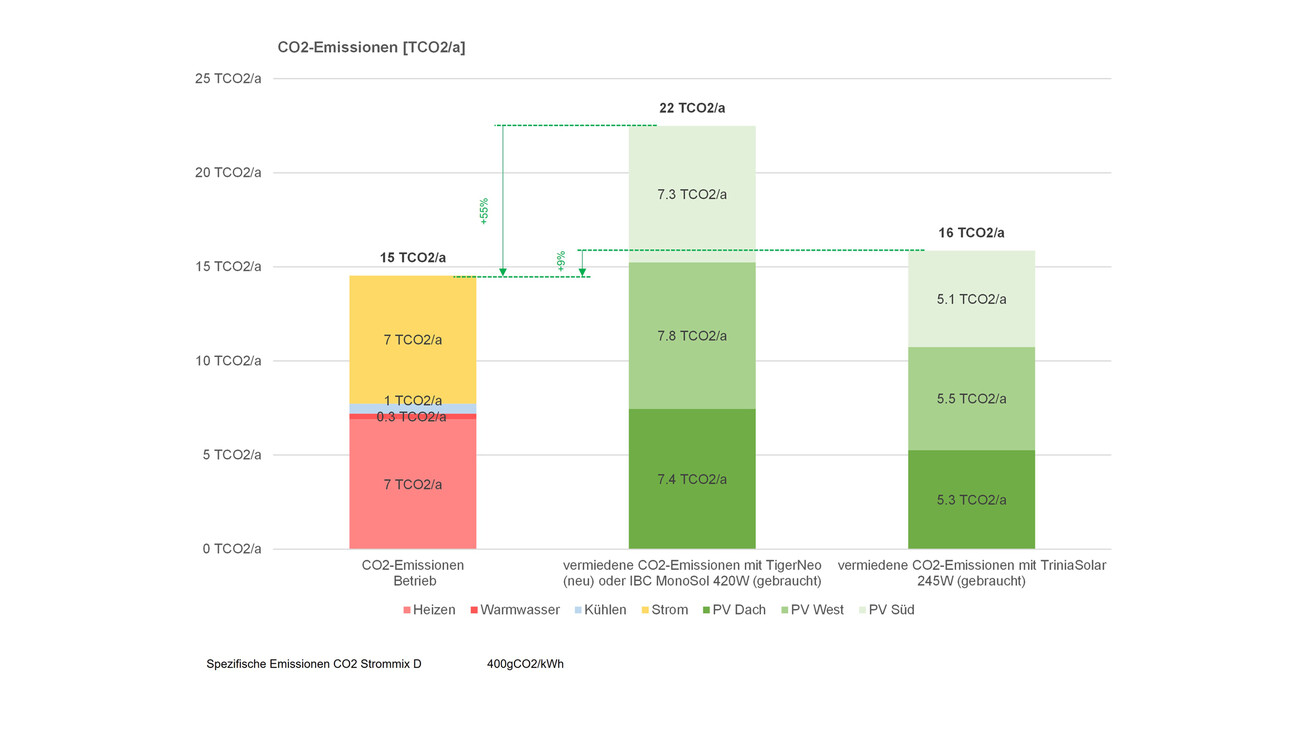New Construction of Operation- and Office Building, Langenfeld, Germany
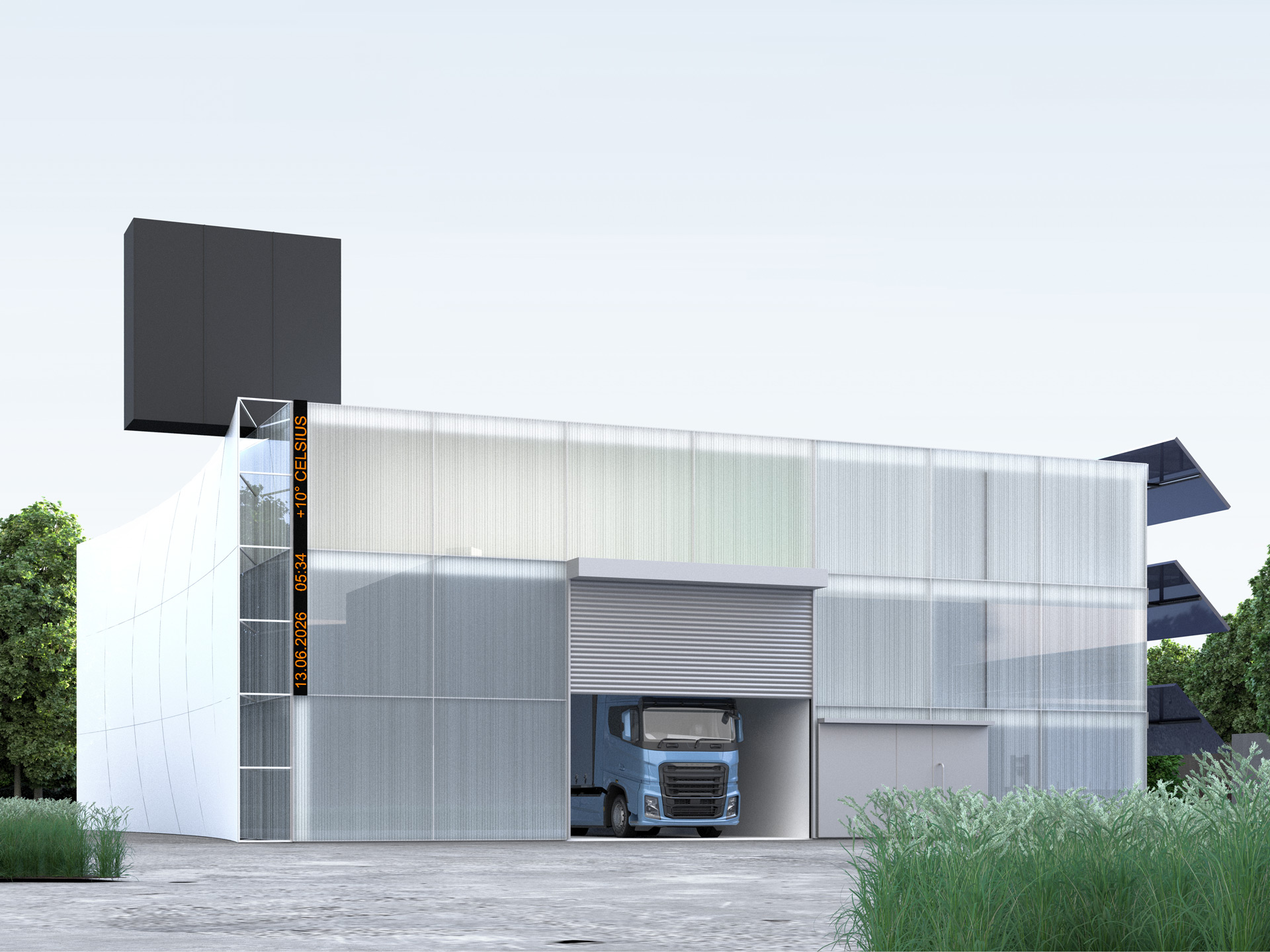
The company m+h manufactures and distributes technical textiles for a wide range of applications including tarps for trucks, trailers, and rail transportation. They require a new building with offices for their administration as well as space for measurement, assembly, and repairs.
The climate and energy concept of the three-story new building emphasizes minimal technical systems and low energy consumption. Transsolar contributed to the building design, focusing on ventilation, daylight quality, summer comfort, and energy supply.
Fresh air in the offices, the assembly hall, and production area is supplied through natural ventilation via windows, with exhaust air extracted floor-by-floor through a chimney. In the offices, the airflow passes through sound-dampening ventilation elements before entering the corridor area. A solar chimney supports the exhaust extraction, with air being bypassed into it during summer. In winter, a heat pump recovers heat from the exhaust air.
Thermal comfort is ensured through efficient night-time ventilation combined with fixed shading. Textile screens serve as shading for the assembly hall while PV modules are implemented for the offices. The color and transparency level of the textile screens on the hall facade are selected to maintain good outward visibility while allowing sufficient daylight to enter. The size and placement of the PV modules as fixed shading for the offices were specifically optimized to achieve good thermal and daylight comfort inside. Ceiling fans improve thermal comfort in all areas during the summer. The offices are heated in winter and cooled in summer by an underfloor activation system. An air-source heat pump provides heating and cooling when needed.
The building’s annual operational carbon emissions amount to approximately 15 tonnes of CO₂. The south- and west-facing roof and facades are equipped with PV modules (97 kWp), producing at least 40 MWh of renewable electricity per year. This results in a carbon offset of around 16 tonnes per year, making the building climate-neutral on an annual basis. Some of the PV modules are used components, which reduces investment costs and embedded 'grey energy'.


